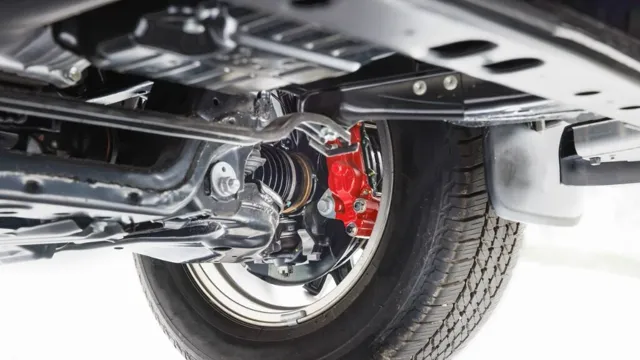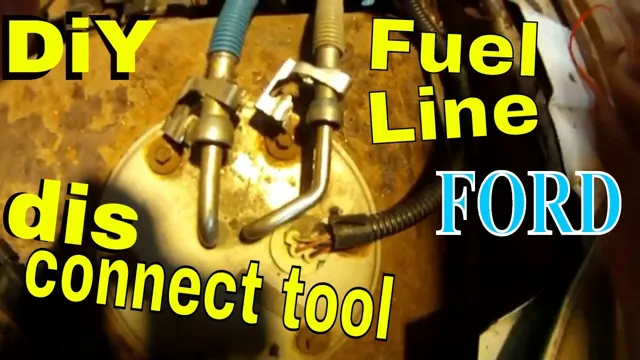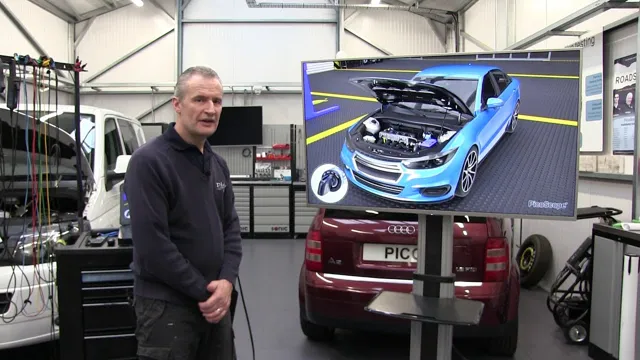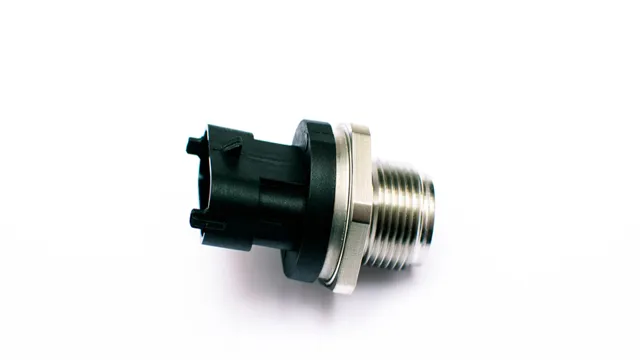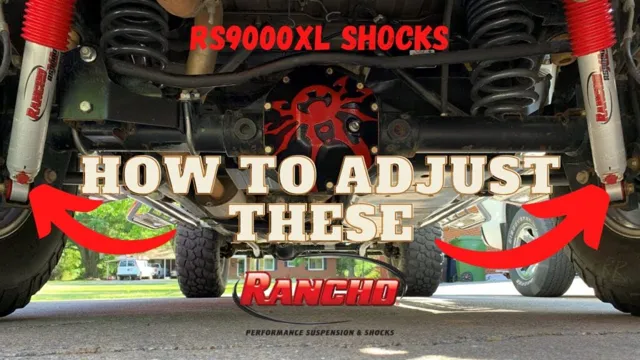Unlocking the Secrets: How to Add 2 Inches to Your 4 Inch Lift
Have you ever wished you could add a bit more lift to your off-road vehicle? Maybe you currently have a 4 inch lift, but you’re craving just a little bit more height. Well, you’re in luck! Adding 2 extra inches to your lift is easier than you might think, and can give your off-roading adventures the extra boost they need. First, you’ll want to consider the type of lift kit you currently have.
If it’s a body lift kit, it may be more difficult to add additional height without compromising your vehicle’s safety. However, if you have a suspension lift kit, adding a couple of extra inches can be a relatively simple process. One option is to install taller springs or coilovers, which will give you the added height you’re looking for.
It’s important to note that you’ll also need to make sure your shocks and other suspension components can handle the extra height. Another option is to add a body lift kit on top of your existing suspension lift. This will allow you to add additional clearance under your vehicle without having to adjust your suspension components.
Keep in mind that this method may not be as effective as adding taller springs or coilovers, as a body lift does not actually change the height of your suspension. Regardless of which method you choose, it’s important to make sure you’re not compromising your vehicle’s safety or handling. It’s always a good idea to consult with a trusted mechanic or off-road specialist before making any major modifications to your vehicle’s suspension.
In summary, adding 2 inches to a 4 inch lift is definitely achievable with the right tools and modifications. Just make sure to do your research, consult with the experts, and take all necessary safety precautions. With a little bit of work, you’ll be hitting the trails with even more confidence and capability than before!
Assess your lift
If you’re looking to add an additional 2 inches to your 4 inch lift, the first step is to assess the current setup of your lift. This means taking a look at the type of lift kit you have installed, as well as the components that make up the system. It’s important to understand the mechanics of your lift, including the shocks, springs, and other components, in order to properly modify it.
Once you’ve taken inventory of your current lift, you can begin to explore options for adding height. This could include upgrading to longer shocks or springs, adding coil spacers, or even switching to a different type of lift kit altogether. Whatever route you choose, it’s crucial to make sure that your modifications are properly installed and will not compromise the safety or integrity of your vehicle.
By taking the time to assess your lift and make informed decisions about modifications, you can safely and effectively increase the height of your ride.
Measure the current lift height
When it comes to assessing the lift in your building, measuring the current lift height is an essential step. To do this, you’ll need to measure the distance between the floor and the bottom of the lift car when it’s at its highest point. You can do this by using a measuring tape or a laser measurement tool.
It’s important to take into account any changes in height between floors, as this can affect the lift’s performance. By assessing your lift’s current height, you can determine if it’s meeting the needs of your building’s occupants. If the height is insufficient, you may need to consider upgrading the lift or making necessary adjustments to the building’s infrastructure.
By taking the time to assess your lift, you can ensure its safety and functionality for years to come. So, don’t hesitate to take the necessary steps to keep your building’s lift up to date and in good working condition.
Check for tire clearance
When you’re considering upgrading your vehicle’s lift, there are a few things to keep in mind to make sure everything runs smoothly. One important factor to consider is tire clearance, as it will ensure that your vehicle won’t encounter any issues while driving. Before investing in your lift, assess it to make sure it meets the clearance requirements for your tires.
Doing so will ensure that you have enough clearance to drive comfortably and avoid any unnecessary problems. You don’t want to put in all that effort and money only to find out that you can’t even drive because your tires are scraping against the wheel well! So, make sure to check for tire clearance before making any big decisions.
Select your kit
If you’re looking to add 2 inches to a 4 inch lift, the first step is to select the right kit. There are a variety of kits available on the market that can help you achieve your desired lift height, including leveling kits, body lifts, and suspension lifts. Depending on your specific vehicle and needs, you may want to opt for a suspension lift kit to achieve the extra 2 inches.
These kits typically include new shocks, springs, and other components to provide the necessary lift. It’s important to select a kit that is compatible with your vehicle and that provides the level of lift you need without compromising safety or performance. Take the time to research the available options and consult with a professional installer if needed to ensure you select the right kit for your vehicle.
With the right kit, you’ll be able to achieve the lift height you desire and take your off-roading adventures to the next level!
Choose a spacer kit
When it comes to customizing your vehicle, adding a spacer kit can make a huge difference in both aesthetics and performance. But with so many options on the market, how do you choose the right one for your vehicle? First and foremost, you need to take into consideration the make and model of your vehicle. Not all spacer kits are universal, so it’s essential to choose a kit designed specifically for your car or truck.
Additionally, you’ll need to decide on the size of the spacers you want to add. Generally, the smaller the spacer, the less of a noticeable difference it will make. However, larger spacers can affect the wheel fitment and even change the driving dynamics of your vehicle.
Ultimately, it’s up to you to decide the look and feel you’re aiming for. Take some time to do your research and determine the right spacer kit for your goals. With the right spacer kit, you can elevate the appearance and performance of your vehicle in no time!
Decide on a suspension upgrade
When it comes to upgrading your suspension, it’s important to select the right kit for your vehicle. A suspension upgrade can make a huge difference in the handling and performance of your ride. There are a variety of suspension kits available, from lowering springs to full coilover kits, and each offers its own unique benefits.
Before deciding on a kit, consider your driving style and the purpose of your vehicle. Are you looking for better track performance or a smoother daily driver? Lowering springs may be a good starting point for those looking to improve their vehicle’s handling without breaking the bank. However, if you’re serious about performance, a full coilover kit may be worth the investment.
Other factors to consider include adjustability, ride height, and compatibility with other suspension components. Additionally, make sure to do your research on the specific kit you’re interested in and read reviews from other enthusiasts. With the right suspension upgrade, you can take your driving experience to the next level and truly feel connected to the road.
Consider a body lift
If you’re considering a body lift, the first step in the process is to select your kit. But with so many options available, it can feel overwhelming. The key is to do your research and find a kit that fits your specific needs and budget.
Look for kits that are designed specifically for your year, make, and model of vehicle, as well as ones that include all the necessary components for a complete installation. You’ll also want to consider factors such as lift height, ride quality, and the durability of the materials used. Keep in mind that while a body lift can give your vehicle a more aggressive look and improved clearance, it can also affect handling and stability.
Ultimately, the right kit for you will depend on your individual preferences and intended use of your vehicle. With careful consideration and the right kit, a body lift can be an excellent way to enhance the appearance and performance of your vehicle.
Install the kit
So, you’ve got a 4 inch lift and you’re looking to add 2 more inches to your lift. Lucky for you, it’s not too difficult to add that extra height with a lift kit. The first step is to make sure you have all your materials ready to go.
You’ll need the lift kit, a socket set, a torque wrench, and some jack stands to keep the vehicle lifted safely. Next, you’ll need to disconnect the sway bar link, the shocks, and the track bar. Once those are disconnected, you can begin installing the components of the lift kit.
It’s important to follow the instructions carefully to ensure everything is put together correctly. Finally, reattach the sway bar, shocks, and track bar and tighten everything down with your torque wrench. With the installation complete, you should have gained the additional 2 inches you were looking for, giving your vehicle a bigger, badder look on the road or on the trails.
Don’t forget to test it out and make any necessary adjustments to ensure a smooth ride.
Follow kit instructions carefully
When it comes to installing a kit, it’s important to follow the instructions carefully. Don’t try to cut corners or take shortcuts, as this can lead to problems down the road. Make sure you have all the necessary tools and equipment on hand, and read through the instructions thoroughly before you begin.
Take your time and double-check each step as you go along. If you’re uncertain about anything, don’t hesitate to consult the manufacturer’s website or customer support line. By following the instructions closely, you’ll ensure that the kit is installed correctly and functions as it should.
Remember, taking a little extra care and attention now can save you a lot of trouble in the long run.
Have a professional install if unsure
Installation of a kit can be a daunting task, especially if you are unsure of how to do it. It is crucial to have a professional install it for you if you are not confident enough to do it yourself. The installation process can be complicated, and it is best to have experts install it for your safety and the proper functioning of the kit.
Professional installation is recommended for all types of kits, whether it is a car stereo, security system, or any other gadget. It may cost a little more, but it will save you from potential damages and ensure that the installation is done with accuracy. Remember, if you are unsure about the installation process, don’t hesitate to seek professional help.
It is always better to be safe than sorry. Consequently, having experts install your kit will be beneficial in the long run.
Test and adjust
If you’re looking to add 2 inches to your 4-inch lift, testing and adjusting is an essential step in the process. First, make sure to measure and mark the height of your vehicle before and after making any modifications. Next, consider upgrading your suspension kit or replacing your shocks to accommodate the new lift height.
It’s also important to check your alignment and make any necessary adjustments to ensure your tires wear evenly and your vehicle handles properly. Once you’ve completed the modifications, take your vehicle for a test drive and pay attention to any changes in ride quality, handling, and braking. If necessary, make further adjustments to ensure your vehicle is safe and performs well.
With these steps in mind, adding 2 inches to your 4-inch lift can be a successful and rewarding modification for your vehicle.
Check for proper alignment
Alignments are crucial when it comes to any machinery or equipment. The same can be said for vehicles. It is critical to ensure that your car wheels are in proper alignment.
Misaligned wheels can lead to uneven tire wear, difficulties in steering, and can even be a safety hazard. Therefore, it is vital to test and adjust your wheel alignment. There are a few signs that your car may not be in proper alignment.
These include uneven tire wear, your vehicle drifting to one side, or your steering wheel not returning to the center after making a turn. If you notice any of these signs, it is time to check your alignment. You can do this yourself or take your vehicle to a professional.
Adjusting wheel alignment involves adjusting the angles of your car’s tires, so they are perpendicular to the road and parallel to each other. Proper alignment ensures that your tires wear evenly, your vehicle is easy to steer, and you have optimal handling. So remember, regular alignment checks can help extend your tire life and improve your driving experience.
Adjust suspension as needed
Adjusting suspension can make a significant difference in your riding experience. It’s essential to test your suspension and make adjustments accordingly, especially if you’re going to ride in different conditions. The suspension on your bike is designed to absorb bumps and shocks while maintaining stability and control.
When it’s not set up correctly, you may feel unstable or uncomfortable. To test your suspension, take your bike for a ride on different terrains and at different speeds. Notice how it feels and where it could improve.
Based on your observations, you may need to adjust the spring rate, preload, or compression. Don’t be afraid to experiment with different setups until you find the one that works best for your riding style. With the right suspension setup, you can ride with confidence knowing your bike can handle whatever comes your way.
Conclusion
Unfortunately, there’s no magic pill or potion to add 2 inches to a 4 inch lift. It really comes down to finding the right combination of suspension components and tires that work best for your specific vehicle and driving needs. Remember, bigger isn’t always better, so take the time to do your research and consult with experts in the industry before making any major modifications.
And always prioritize safety over style – after all, a lifted truck won’t do you much good if it can’t handle the terrain you’re tackling.”
FAQs
What is the difference between a leveling kit and a lift kit?
A leveling kit raises the front of the vehicle to make it level with the back, while a lift kit raises the entire vehicle for increased ground clearance.
Can you add a 2-inch lift on top of an existing 4-inch lift?
It is possible, but not recommended. Adding too much lift can affect the vehicle’s suspension and steering.
Do I need new shocks when adding a lift kit?
It is recommended to replace shocks when adding a lift kit to ensure optimal performance and stability.
What are the benefits of adding a lift kit to a vehicle?
Benefits include increased ground clearance for off-roading, larger tire size options, and improved visibility on the road.

